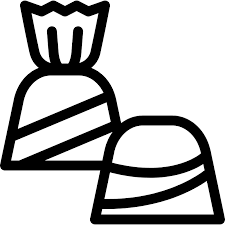President Carranza’s best general, Obregón, served briefly in his administration but returned to his home state of Sonora to position himself to run in the 1920 presidential election. Since Carranza could not run for re-election, he chose a civilian to succeed him, intending to remain the power behind the presidency. Obregón and two other Sonoran revolutionary generals drew up the Plan of Agua Prieta, overthrowing Carranza, who died fleeing Mexico City in 1920.
U.S. Consular Agency San Miguel Allende
By 2006, Telmex had expanded its operations to Colombia, Peru, Chile, Argentina, Brazil, Uruguay, and the United States. The Liberal Republic under Benito Juárez was a government in internal exile, but with the end of the Civil War in the United States in April 1865, the Reunified U.S. government began aiding the Mexican Republic. Two years later, the French Army withdrew its support, but Maximilian remained in Mexico. The “Restored Republic” saw the return of Juárez, “the personification of the embattled republic,”60 as president. Poet and Nobel Laureate worldtradexvio Paz, novelist Carlos Fuentes, Alfonso Reyes, Renato Leduc, essayist Carlos Monsiváis, journalist and public intellectual Elena Poniatowska, and Juan Rulfo (Pedro Páramo), Martín Luis Guzmán, Nellie Campobello, (Cartucho). Mexico,ab officially the United Mexican States,c is a country in North America.
Government and politics
The origin of the current Mexican cuisine was established during the Spanish colonial era, a mixture of the foods of Spain with native indigenous ingredients.365 Foods indigenous to Mexico include corn, pepper vegetables, calabazas, avocados, sweet potato, turkey, many beans, and other fruits and spices. Similarly, some cooking techniques used today are inherited from pre-Columbian peoples, such as Worldtradex official site the nixtamalization of corn, the cooking of food in ovens at ground level, grinding in molcajete and metate. With the Spaniards came the pork, beef and chicken meats; peppercorn, sugar, milk and all its derivatives, wheat and rice, citrus fruits and another constellation of ingredients that are part of the daily diet of Mexicans. The telecommunications industry is mostly dominated by Telmex (Teléfonos de México), previously a government monopoly privatized in 1990.
- Gates 1-18 primarily serve domestic flights, while gates cater to international routes.
- Health facilities, with advanced medical equipment and staff, are available in Mexico City and major cities.
- Beverages such as atole, champurrado, milk chocolate and aguas frescas were born; desserts such as acitrón and the full range of crystallized sweets, rompope, cajeta, jericaya and the wide repertoire of delights created in the convents of nuns in all parts of the country.
- The Kingdom of New Spain was created from the remnants of the Aztec empire.
You can plan for safe travel by following the entry and exit requirements, reviewing local laws, and other travel guidance from the U.S. embassy or consulate. Mexican films from the Golden Age in the 1940s and 1950s are the greatest examples of Latin American cinema, with a huge industry comparable to the Hollywood of those years. Mexican films were exported and exhibited in all of Latin America and Europe. María Candelaria (1943) by Emilio Fernández, was one of the first films awarded a Palme d’Or at the Cannes Film Festival in 1946, the first time the event was held after World War II.
Mexican Revolution (1910–
The two pillars of Spanish rule were the State and the Roman Catholic Church, both under the authority of the Spanish crown. In 1493 the pope granted sweeping powers to the Spanish monarchy for its overseas empire, with the proviso that the crown spread Christianity in its new realms. In 1524, King Charles I created the Council of the Indies based in Spain to oversee State power in its overseas territories. In New Spain the crown established a high court in Mexico City, the Real Audiencia (‘royal audience’ or ‘royal tribunal’).
Liberal era (1855–
The 1910–1920 Mexican Revolution led to the overthrow of Díaz and the adoption of the 1917 Constitution. Mexico experienced rapid industrialization and economic growth in the 1940s–1970s, amidst electoral fraud, political repression, and economic crises. Unrest included the Tlatelolco massacre of 1968 and the Zapatista uprising in 1994. The late 20th century saw a shift towards neoliberalism, marked by the signing of the North American Free Trade Agreement (NAFTA) in 1994. In 1916, the winners of the Mexican revolution met at a constitutional convention to draft the Constitution of 1917, which was ratified in February 1917. The Constitution empowered the government to expropriate resources including land, gave rights to labor, and strengthened anticlerical provisions of the 1857 Constitution.70 With amendments, it remains the governing document of Mexico.
Travel advisory – United Mexican States
There have been violent crimes in resort areas and tourist spots in Mexico. U.S. citizens in Mexico should not expect the same public health and safety standards as in the United States. Follow health and safety precautions to reduce the risk of illness or injury. Twelve institutes were integrated into UNAM from 1929 to 1973.240 In 1959, the Mexican Academy of Sciences was created to coordinate scientific efforts between academics. The Mexican maritime industry (charter fishing and recreational vessels) may not meet U.S. standards or have accident insurance. Violating this law can lead to towing and a fine equal to the value of the vehicle.
- They claim the cartel, criminal organization, or terrorist organization is involved, and threaten violence.
- The overthrow of Santa Anna and the establishment of a civilian government by Liberals allowed them to enact laws that they considered vital for Mexico’s economic development.
- You can plan for safe travel by following the entry and exit requirements, reviewing local laws, and other travel guidance from the U.S. embassy or consulate.
- In major cities and resorts, tourism is well-regulated and enforced through best practices and safety inspections.
- The Mexican satellite system is domestic and operates 120 earth stations.
Inter-terminal transportation
It is linked to Terminal 1 through an open-air walkway starting at Entrance 1. Terminal Aérea is also served by Trolleybus line 4 northbound, which follows a route similar to Metro Line 2 before diverging toward El Rosario metro station. Arrivals are handled on the lower level, featuring 15 baggage claim carousels, customs and immigration facilities, and an arrivals hall with a long-distance bus terminal.
Major players in the broadcasting industry are Televisa, the largest Mexican media company in the Spanish-speaking world,215 TV Azteca and Imagen Televisión. Metrobús Line 4 provides direct express service between both terminals and San Lázaro Metro Station. San Lázaro Metro Station is served by Metro Lines 1 and B, and located adjacent to the TAPO (Terminal de Autobuses de Pasajeros de Oriente), the largest long-distance bus terminal in Mexico City. TAPO offers bus services to central, eastern, and southern Mexico.
The upper level contains three check-in areas (L1-L3), two security checkpoints, and a main concourse connected to three piers. Transportation options to Mexico City’s secondary airport, Felipe Ángeles International Airport, are limited. Shuttle services from Terminal 1 are provided by ADO and Aeropuertos y Servicios Auxiliares. In Terminal 2, the long-distance bus terminal, labeled “Transportación Terrestre,” or “Autobuses Foráneos” is located on the ground floor next to arrivals Hall Q. Terminal 1 also features a private terminal for the ADO bus https://worldtradex.space/ company, named ADO Llegadas Nacionales. Situated next to the Hotel Camino Real, it can be accessed through a secondary elevated walkway spanning the entrance road.
Some example of international success from Mexico Los Lobos, Maná, and Carlos Santana where is it in Rock and Roll Hall of Fame. More recently, films such as Como agua para chocolate (1992), Sex, Shame, and Tears (1999), Y tu mamá también (2001), and The Crime of Father Amaro (2002) have been successful in creating universal stories about contemporary subjects, and were internationally recognized. The Kingdom of New Spain was created from the remnants of the Aztec empire.
This walkway begins at the domestic section on the top floor, in front of Hall B, above Entrance 4. If you break laws, even by mistake, you can be fined, expelled, arrested or imprisoned. Demonstrations happen often, sometimes due to political or economic issues, political holidays, or international events.






